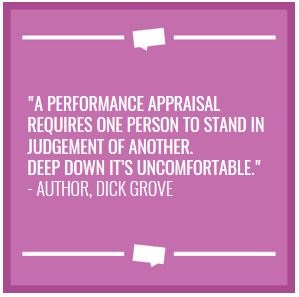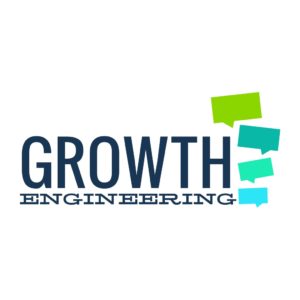Improve Your Performance Appraisal With The Power Of Learning Technology
A whopping 98% of people think that annual performance appraisals are unnecessary [1]. You’re probably one of them! This mass disillusionment with the king of all one-to-one is not surprising. For the majority of organizations, the appraisal process is a tick box exercise, a paper trail, an HR KPI. Even the experts think the annual appraisal is pointless, with 78% of HR managers saying it doesn’t improve employee performance [2]. It’s clear, the annual performance review isn’t performing!

But it doesn’t have to be this way. At its heart, the performance review is all about learning. So, as a die-hard learning fan, I am not ready to give up on the performance appraisal just yet!
Performance Management Is A Continuous Learning Process
The problem with annual performance appraisals is the ‘annual’ part! Something as important as monitoring performance, listening to employees, offering feedback and planning development shouldn’t be restricted to a once-a-year affair. To succeed, the performance review should be a continuous development process.
Fortunately, employers are waking up to the need for change! In the UK alone, two-thirds of large companies are engaged in changing their appraisal process [3]. Yet, change only works if it’s done right. Learning technology can help make the transformation a success!
8 Top Tips To Transform Your Performance Appraisals With Learning Technology
You can use learning technology to transform your performance appraisals from pointless into powerful! Here’s how to make it happen:
1. Communicate The Purpose Of The Performance Appraisal
Don’t expect staff to know why their performance appraisals matter, tell them! Whether you’re communicating with staff face-to-face, or online, you need to make the purpose of the performance appraisal clear from the start. Why should staff bother taking part? What’s in it for them? By making the personal and wider company benefits of improved performance clear, you create Epic Meaning, which engages staff.
2. Dispel Fear 
For many, performance appraisals are as scary as giving a TED Talk naked! Fortunately, you have the power to dispel employees’ fears by demystifying the appraisal process!
Clearly communicate the facts and benefits of the performance appraisal to employees. Make performance management a normal part of the workplace culture. By removing the mystery and making appraisals the norm, employees will be less likely to turn the simple performance appraisal into the monster from their worst stress-dream!
Another simple way to beat the appraisal monster is through a little fun! Do this by encouraging staff to share what performance means to them on their LMS. It could be anything from cheesy motivational memes, to inspirational YouTube videos or photos of their favorite athletes. It works because when we laugh at something it no longer seems so scary.
3. Preparation, Preparation, Preparation
Preparation is the key to success in life (most of the time!) Delivering a successful performance appraisal is no different. Yet, 1 in 5 employees doesn’t think their managers prepare for their appraisal meeting at all [4]! Lead by example and make sure you’re ready for anything!
Ask employees to complete their performance review documents on the LMS before the official review meeting. Completing appraisal documents online means staff can do it in their own time and wherever they feel most comfortable. This is especially useful for remote workers, who may not be able to meet with their manager face to face. What’s more, this advance information will help you better plan the review meeting and offer each employee meaningful feedback.
4. Question-A-Day Learning App
You can gather valuable employee insights anytime, anywhere using learning apps that deliver quiz questions straight to employees’ phones. In this way, learning apps can be used to support performance all year round. For example, a Question-A-Day feature could be used to prompt employees to think about their performance and progression regularly. Send thought-provoking informal questions to their mobiles, such as ‘What’s your proudest achievement this month?’ or ‘What does success mean to you?’ Why not add photo questions to keep the quizzes fun and engaging? If it works for BuzzFeed, it can work for you! Regular performance appraisal follow-up actions like this remind employees of their goals, which helps create behavior change.
5. Personalised Training Pathways
Research shows 65% of employees cite development and career opportunities as their top work motivators [5]. It’s up to you to keep staff motivated by addressing their training needs!
Learning technology lets you meet training needs straight away. You can create personalized training packages on your LMS which are tailored to each employee’s goals, needs, and job expectations. You can use employees’ feedback to match online learning curricula with individual development needs and wants. Remember, don’t restrict Learning and Development to a once-a-year gig. Ensure tailored training packages are delivered to employees all year round!
6. Reward Staff For Achievements

This is how good rewards feel!
Working towards our goals can be hard work, and there isn’t much incentive if we only get feedback once a year. Research shows employees today want regular on-the-spot recognition [6]. So, whether staff have completed online training, met a KPI or put forward a brilliant idea, recognize their hard work with rewards. You could use gamification to award on-the-spot recognition with points, badges, and certificates on the LMS.
Give these rewards Epic Meaning by offering staff the chance to trade virtual points for real world benefits. 100 points could get you a free coffee, 5 praise badges could equal an extra day off work! Whatever the rewards, make them meaningful!
7. Support Performance Through The Power Of Social
Sharing our goals creates accountability. Better yet, sharing our progress on the LMS is a strong motivational tool. The proof is in the pudding, literally! A 2013 study revealed dieters who shared their weight loss on Twitter lost more weight than those who didn’t [7]. You too can harness the power of social to help employees achieve their goals. Encourage staff to share their targets and achievements on the LMS message boards. Whether these are company-wide chats or private, groups and message boards can create a space where staff can share feedback, support and celebrate success. Keep it positive by inviting everyone to only post what they feel comfortable sharing.
8. Performance Tracking
Last but not least, use online performance management systems to record and track each employees' goals. By recording employees’ goals on the LMS this important data is stored in an accessible place. This means each employee can refer back to their goals online whenever needed. Why not introduce a journaling feature where employees can jot down notes about their progress, struggles and achievements? These notes could then be shared with their manager and colleagues or kept as a private motivational tool. Online recording tools mean goals can be kept up to date and clearly reflect the employee’s progress and development. This recording feature is important, as writing our goals down increases our chance of success by 50%.
With a little help from learning technology, you can transform your performance appraisal process from an annual tick-box event into a continuous development process. Use my 8 top tips to give your staff what they need to perform or download the eBook How To Win Your Training Budget: The Complete Guide To Training Evaluation and start unleashing superheroes today!
If you want to learn more about performance appraisal and much more, visit my profile to see the entire collection of our resources or contact us directly.
Loved this article? Tell us about it by leaving your comment below.
References
1. Is it time to give up on performance appraisals?
2. No Review, No Problem: Making Talent Decisions without Ratings
4. 13 Disappointing Performance Appraisals Facts You Really Need To Know (Infographic)
5. What benefits increase employee loyalty and engagement?
6. 5 Employee Feedback Stats That You Need to See










